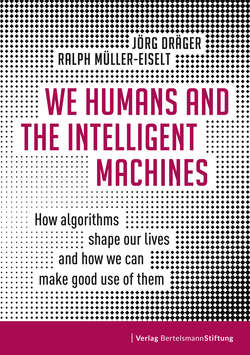Читать книгу We Humans and the Intelligent Machines - Jörg Dräger - Страница 18
Complexity: Overwhelmed by too many options
ОглавлениеGerman cities are not often compared with New York City. However, those public administrators in Berlin who are involved in school planning will probably have recognized the situation described in Chapter 1. Assigning children to a school efficiently and fairly while taking many relevant factors into account is not a task carried out only in the Big Apple.
School catchment areas have to be recalculated again and again. Birth rates develop differently from neighborhood to neighborhood, new residential areas emerge and socio-economic structures change, as do the traffic situation and the wishes of parents. All this has to be taken into account. Moreover, schools’ capacity utilization must be maximized, the routes children travel every day should be as short and safe as possible, and there should be a diverse mix of students at each school.
Another reason why this task is so difficult for administrators is that its complexity can hardly be reduced by excluding or prioritizing certain factors. All criteria are relevant. And each in itself is difficult to assess and address. The length of the route to school, for example. This is of particular importance in the German state of Brandenburg which mandates that as soon as registrations at a primary school exceed its capacity, the following rule applies: Whoever lives closest gets to attend. In theory. In 2012, when the city of Potsdam surveyed how effective the local catchment areas had been, the data for almost 7,000 primary school children revealed that 35 percent of them did not attend the nearest school, and 21 percent did not even attend the second nearest.14
How people react to complexity becomes evident in everyday situations and even in simple decisions. A long shelf in the supermarket, packed full of chocolate in many variations: white, whole milk, dark, with nuts, fruit, cookie chunks, as a bar or box of pralines, inexpensive or marketed as an exclusive brand. For customers, such an extensive assortment means making a choice. An experiment by psychologists Sheena Iyengar and Mark Lepper from Stanford University has proven how difficult this can be: One group of participants could choose from six chocolates, another had 30 varieties to select from. You might think that the larger the selection, the better. Far from it. The participants who had to choose between 30 options took longer, found the decision more difficult and were less satisfied in the end.15
It is true that, in principle, decisions become better the more information they are based on. After a certain point, however, this rule no longer applies. The quality of decision-making begins to deteriorate with further input because humans’ ability to process information is limited. Our cognitive capacities become exhausted, we feel overwhelmed.16 As complexity increases, so does the probability that a decision will not be made at all.17 An obvious result in the supermarket would be that the customer does not select anything at all and goes without chocolate that day.
Such moments of feeling overwhelmed occur mostly when several options are available that differ in various ways.18 Applied to the chocolate example, the customer has to consider filling, size, shape, price, cocoa content and brand. Usually people then use mental shortcuts and rules of thumb to simplify such complex tasks.19 In the supermarket, some information is ignored, other characteristics are used to limit the selection. If someone does not like nuts, chocolate containing peanuts, for example, is immediately eliminated. In addition, people reduce complexity by abstracting various qualities. In such cases, brand-name chocolate is preferred, since various desirable traits are associated with it.
Catchment areas for primary schools, however, do not allow for non-decisions or mental shortcuts. The length and safety of the route to school cannot simply be ignored, neither can the schools’ use of resources or their social mix. In order to achieve optimal allocation, the public authorities need to run through different scenarios to identify their impact on the student population as a whole. When done manually, this takes considerable time and is prone to error (see Chapter 10).
If a decision has to take many options and characteristics into account, we humans quickly reach the limits of our cognitive capacities. Software applications can, however, provide us with meaningful support, especially when we have to examine complex situations in painstaking detail or when we are tempted to simply ignore them.
